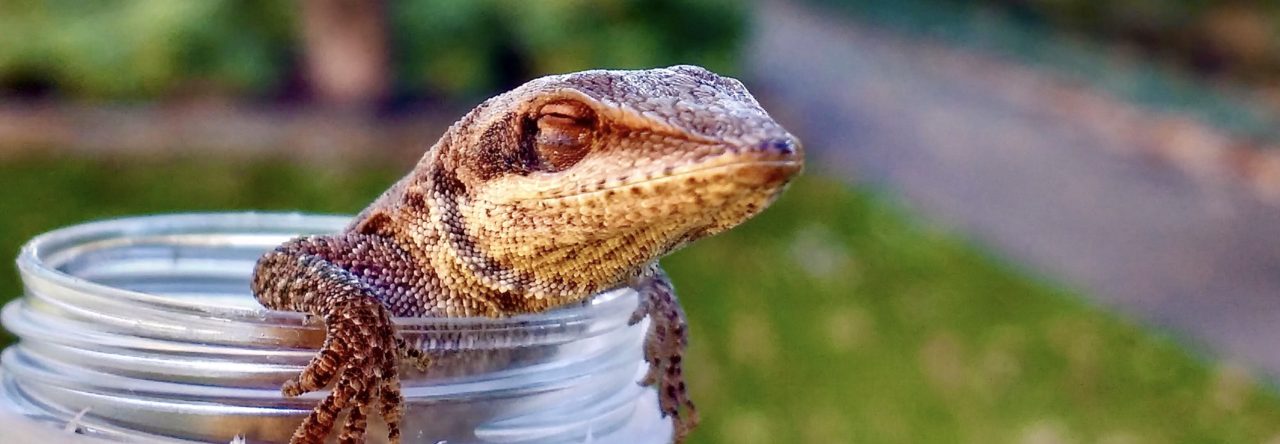During our recent visit to Veragua, a few of the hardier participants decided to forego ziplining in favor of a hike. While traipsing through a beautiful stream, we encountered several A. oxylophus, one of the so-called aquatic anoles. Despite the moniker, aquatic anoles do not spend most of their time in the water. Rather, they perch on vegetation or rocks along stream edges, close to or above the water. While at least one species of aquatic anole, A. vermiculatus, actively hunts for aquatic prey, the diets of most aquatic species, including A. oxylophus, comprise nonaquatic invertebrates. All aquatic anoles, however, use the water for escape: when threatened by a predator, aquatic anoles dive into the water and either flee, by swimming or running across the water to the opposite bank, or submerge underwater until the threat goes away. Previous reports suggest that A. oxylophus uses the latter two strategies.
We had the chance to observe the diving and submergence behavior in action after catching and subsequently releasing an A. oxylophus. After it dove in the water, the anole immediately hunkered down on the streambed—and we started timing! Diving ability in anoles is poorly documented: reports in the literature are limited to one individual of A. cristatellus (a species not known for having an affinity to water) that remained submerged for 4.2 minutes, and 31 individuals of A. lionotus and/or A. poecilopus (both aquatic species) that remained submerged for an average of 2.4 minutes (maximum of 4.8 minutes). So, readers, what’s your guess for the dive duration of the A. oxylophus that we observed? Hint: I thought this anole made an impressive showing! We’re planning on following up with further data collection soon.
- Dwarf Boa Versus Giant Twig Anole - September 23, 2014
- Anoles (Sort of) Eat Mice - September 20, 2014
- Advice Needed: Field Sites for A. sagrei in Florida - March 6, 2014



Kirsten Nicholson
Years ago I chased an oxylophus into the water and it clung to the underside of a log in the water for 15 minutes! I was super impressed.
Rich Glor
I’m going to guess 12 minutes.
Pat Shipman
HOW can they stay under for long periods of time? Do they have unusually large lungs? Yes, I know reptilian metabolism can work verrrrrrrrrry sloooooooowly, but for a very small animal, 15 minutes without oxygen is astounding. Anybody got an explanation?
Julienne Ng
It amazes me that cristatellus stays under for that long! My guess for oxylophus is 13.2 minutes.
Peter Mudde
I once gave up counting after a quarter of an hour.. so 20 minutes wouldn’t be unlikely to me..
Jose Rojas Echenique
There is NO way that a little lizard can stay underwater for more than 5 minutes. Don’t they need oxygen? You can’t just shut off your brain.
Katie Boronow
So I was impressed with the anole I saw (9:25, for the record), but I’m even more amazed at the 15+ min records reported here!
@Pat and Jose — No one’s investigated the physiology of the diving anoles, but someone should!
Klaas Bosker
I keep and breed A. Aquaticus for several years now. I have never timed a dive duration.
But some can stay under quite a while. I have noticed however that some individuals take rapidly to the water, dive and swim effortlessly, while others never use the water. And when they do, move franticly to get out.